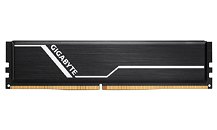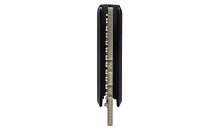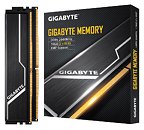Monday, October 15th 2018

GIGABYTE Intros DDR4 Memory Modules with Chunkier Heatspreaders
GIGABYTE expanded its teething DDR4 memory lineup with a new 16 GB (2x 8 GB) dual-channel DDR4 memory kit, called simply "GIGABYTE Memory 2666MHz." These modules lack the Aorus branding featured on the company's very first DDR4 modules. You instead get 32 mm tall, 7 mm-thick modules with a restrained design, and plain GIGABYTE branding.
One area where the company refined its design is the heatspreaders, which are thicker, and have more mass to them, even if they lack finnage. GIGABYTE's module does what it says on the tin - DDR4-2666 with 16-16-16-35 timings, at 1.2 Volts. Out of the box, it packs both JEDEC and XMP SPD profiles. Memory controllers that support DDR4-2666 (such as Intel "Coffee Lake" and later), should run it at the advertised speeds without any user intervention. For older platforms, an XMP 2.0 profile helps achieve the advertised settings. The modules are backed by lifetime warranty.
One area where the company refined its design is the heatspreaders, which are thicker, and have more mass to them, even if they lack finnage. GIGABYTE's module does what it says on the tin - DDR4-2666 with 16-16-16-35 timings, at 1.2 Volts. Out of the box, it packs both JEDEC and XMP SPD profiles. Memory controllers that support DDR4-2666 (such as Intel "Coffee Lake" and later), should run it at the advertised speeds without any user intervention. For older platforms, an XMP 2.0 profile helps achieve the advertised settings. The modules are backed by lifetime warranty.




8 Comments on GIGABYTE Intros DDR4 Memory Modules with Chunkier Heatspreaders
So yeah, big heatsinks don't do any harm but nor do they actually do squat for performance, except in the same way that putting a body lowering kit on a much-used 1980s car makes it faster.